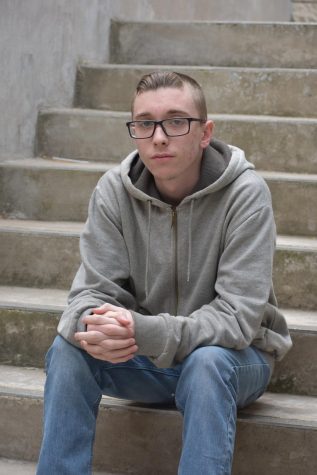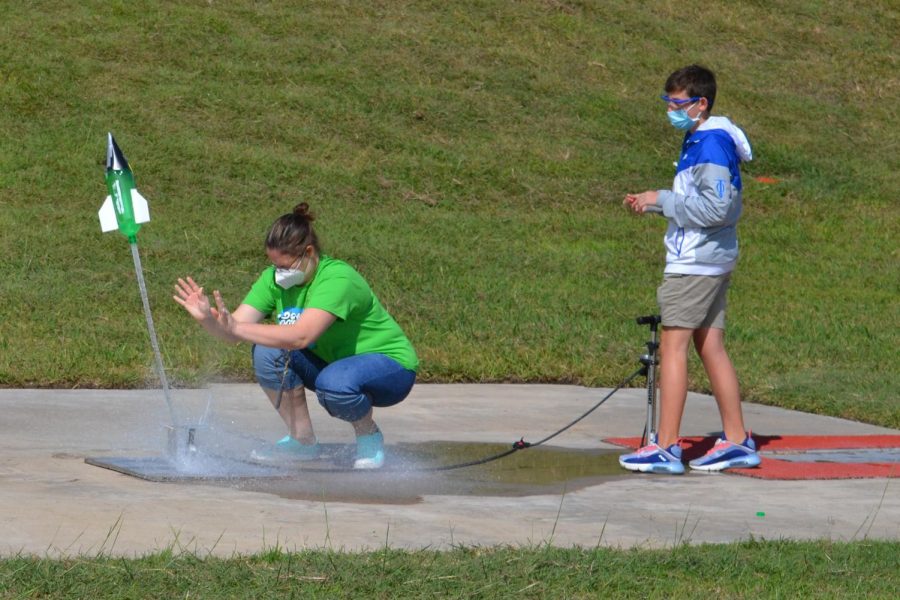Engineers build, launch bottle rockets
Lauren Plunk, the teacher of the principles of applied engineering class, took what her students had been learning outdoors the last week of September.
The students spent roughly three days building bottle rockets out of 2-liter bottles, cardboard, hot glue, string and a makeshift parachute made from a plastic bag.
Each remote learner’s in-person partner brought his or her rocket to school and launched it, recording the results. After construction was finished, a week had passed.
“The best performing rockets went 40 – 50 feet in the air,” Ms. Plunk said.
The goal of the class was to practice the engineering process and put it in action.
“Using the NASA curriculum, they were also learning the influence of drag, thrust, acceleration, stability and a host of other engineering terms,” Ms. Plunk said.
Students found their own challenges when trying to build what could become the most successful rockets they could possibly create.
“The most challenging part is the design process because you have to always be thinking of what you’re doing and what the results could be,” sophomore Ugonna Anyalemechi said.
The whole lesson includes planning, sketching, building and readdressing problems that come up all while thinking about the final result and product.
“Part of the engineering process is overcoming failure,” Ms. Plunk said. “Even in the failures we experienced, we learned how to improve our designs which was the goal for everyone.”

Howdy. My name is Braydon, I’m a senior, and I’ve been on the Newspaper staff for the past three years and all of my high school career. In the future,...


